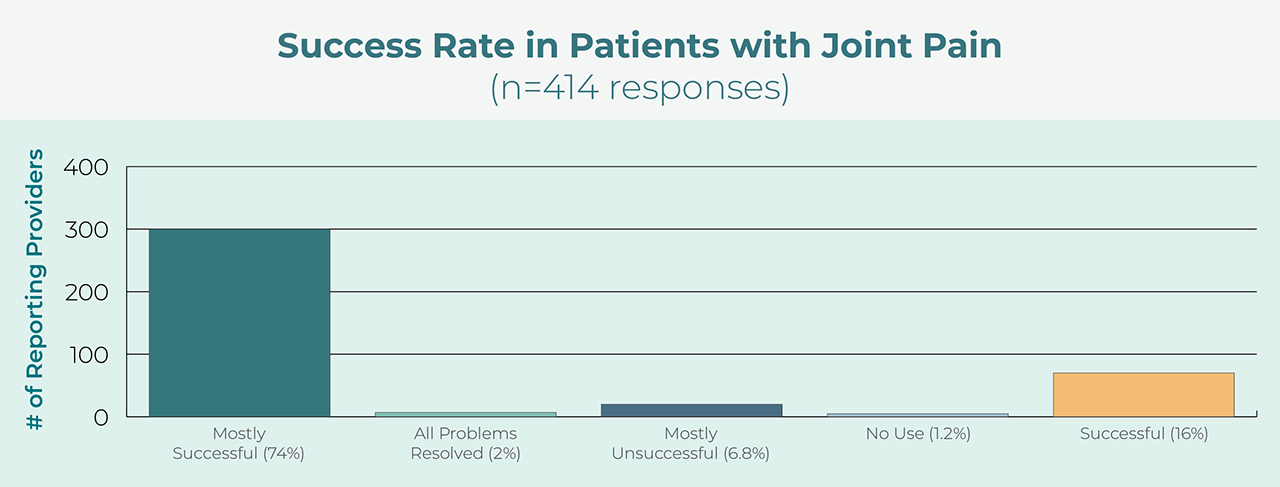What I Learned from a Decade of NTI Treatments
Dr. Stacy Ochoa discusses prescribing NTI devices for migraine-afflicted patients.
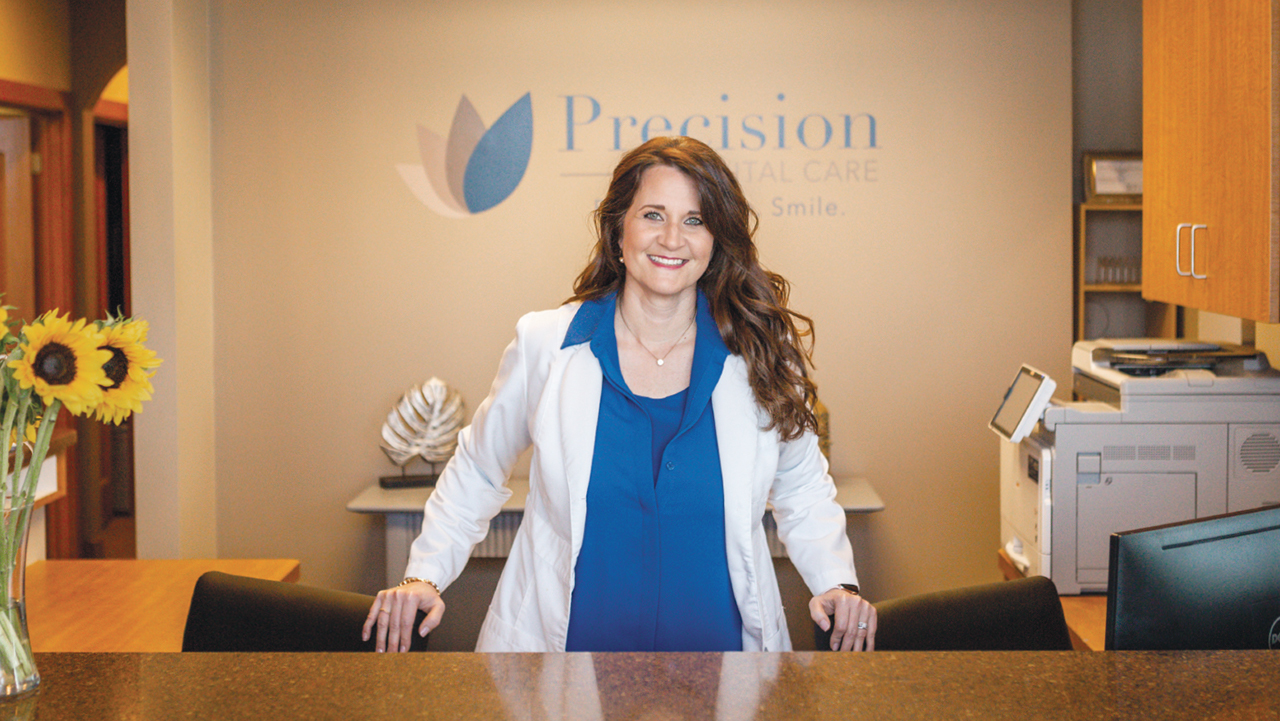
Whether you call them nightguards, orthotics or occlusal splints, bite splints are a treatment option that most dentists have implemented into their practice. I used to only make bite splints for patients with wear, attrition and abfractions — people who were destroying Class V fillings, splitting teeth, and breaking crown after crown. In dental school, I was taught to make a flat-plane bite splint with anterior guidance or canine guidance for patients with bruxism and other parafunctional habits. But now I have learned of even more uses for bite splints.
Do Women and Men Experience Bruxism Differently?
Some of my bite splint patients, usually males, return with the splint chewed through or fractured in the posterior. A lot of my male patients are asymptomatic bruxers, with no pain. Other patients, overwhelmingly females, come back in pain. Women are disproportionately affected by migraines, headaches and other orofacial pain. These patients complain of a sore jaw in the morning or increased headaches and migraines after wearing the splint.
Why Do People Grind Their Teeth While Sleeping?
To better help patients, I tried to learn more about why people brux, but there are several theories. Many researchers believe it can be related to airway disorders like obstructive sleep apnea, which is why I frequently refer these patients to a sleep specialist for dental sleep medicine first. Others theorize that it is related to trigeminal cardiac reflexes, and there is a significant body of literature that supports stress as a major contributor to clenching and grinding. While there’s compelling data to support each of these hypotheses, my focus is solely on saving my patients’ teeth, getting them out of pain and doing my part to improve their quality of life. That’s where the NTI-tss Plus® comes in.

About 10 years ago, I asked one of my colleagues about these theories, and he introduced me to the NTI-tss Plus. When he showed me the device, I initially was unconvinced that it could really work. I decided to try one on my next parafunctional patient. She was always tired, had some jaw pain, and experienced four to five headaches every month. She was desperate for relief after trying virtually everything else — including changing her blood pressure medications and going to the OBGYN to change her birth control — just to try to find some resolution.
I decided to prescribe a device for her. I didn’t have an intraoral scanner yet, so I took full-arch upper and lower impressions and provided a maximum protrusive measurement (simply measure from the facial of the upper centrals to the lingual of the lower centrals when the patient protrudes their mandible as far as possible).
The patient called us early the next week in tears: She felt so much better. It was unbelievably rewarding to hear this, and from that day on, I knew I wanted to continue prescribing the NTI-tss Plus for patients in need.
Can the NTI-tss Plus Reduce Migraines Caused by Teeth Grinding?
As dentists, it is our responsibility to provide patients with dental solutions, especially when they’re not receiving help elsewhere. If I know a person is clenching or grinding and they have symptoms, I know the device I need to prescribe for them to get relief is the NTI-tss Plus. The device reduces clenching intensity by 70%, allowing for a dramatic improvement in quality of life for so many of my patients. Research conducted for the NTI’s FDA clearance showed that 82% of migraine sufferers experienced a 77% reduction in migraine episodes, and the NTI Patterns of Use Survey respondents reported the NTI therapeutic protocol to be “Mostly Successful” or “All Problems Resolved” in:
- 96% of cases for “Pain Above the Cheeks”
- 91.6% of cases for “Pain Below the Cheeks”
- 76% of cases for “Joint Pain”
The NTI-tss Plus has also been shown to be as effective as the most commonly prescribed pharmaceutical treatments for migraines, without the potential for serious side effects.
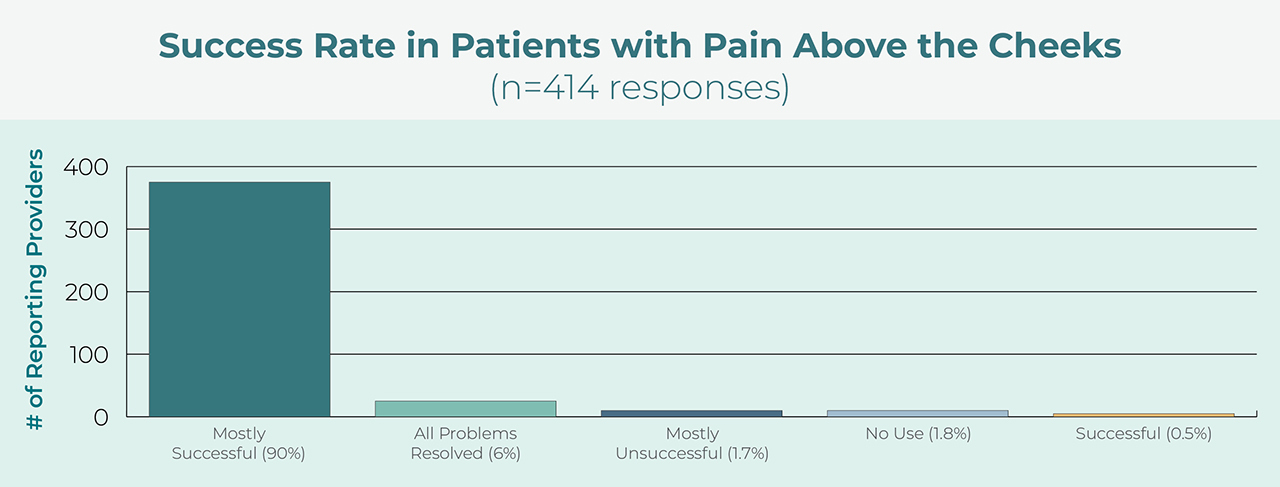
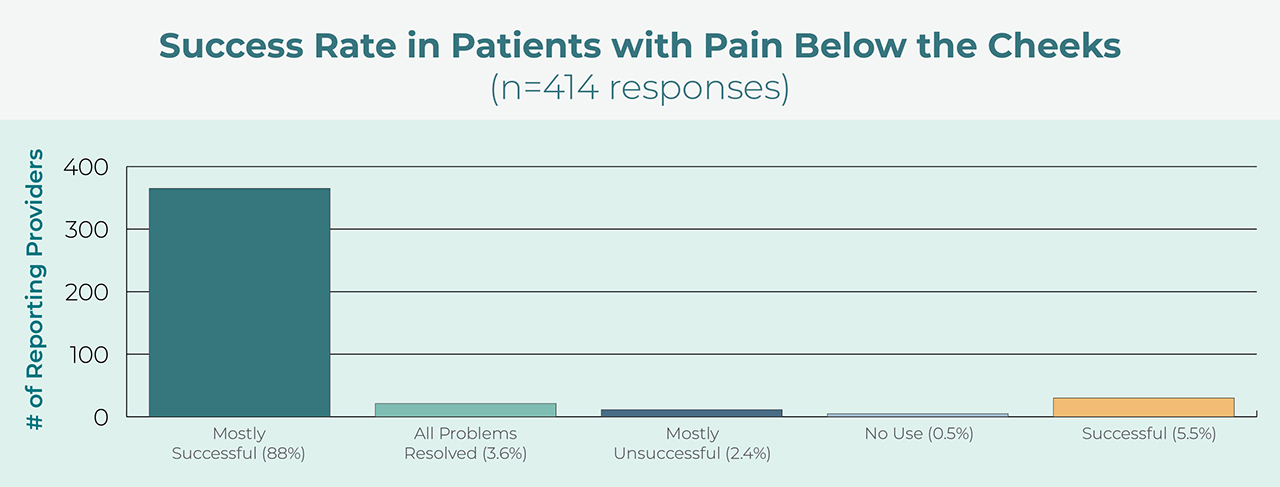
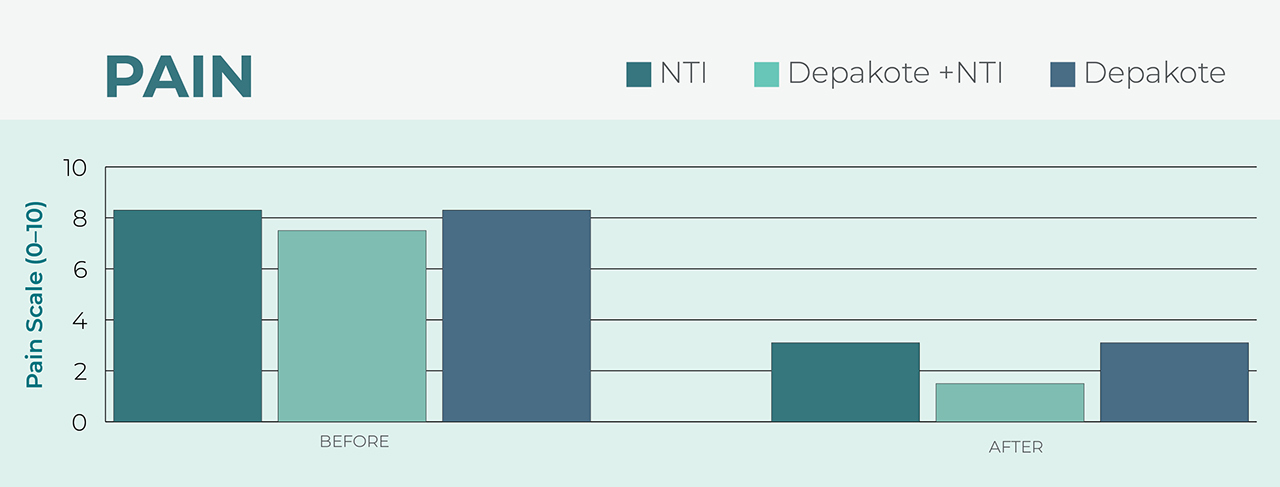
Source: Blumenfeld, A., MD, Tarzemany, R., DDS, & Beladimoghaddam, N., MD. (2011). Combination Therapy: Depakote with an NTI Clenching Reduction Dental Splint for Prophylactic Treatment of Primary Headache; A Pilot Study for Efficacy Assessment. Retrieved from https://static1.squarespace.com/static/5615114ee4b0c5764cd969fa/t/581b3093f7e0abdf04a3e88c/1478176915666/Depakote+and+SCi+For+Headache+Tx+-+Blumenfeld+2009.pdf
How to Add the NTI-tss Plus to Your Practice
I wanted to learn more and do everything I could to optimize the NTI-tss Plus for my patients. I learned about the vascular causes and neurological anomalies that contribute to headaches. Most importantly, I asked my colleague to share practical clinical insights with me about the NTI therapeutic protocol. It was incredibly simple, he told me.
Follow these simple steps to optimize NTI-tss Plus treatment:
- Ensure it is retentive and the patient cannot dislodge it with the tongue or lips.
- Verify that there’s no canine contact with the discluding element (DE) in any excursive movement.
- Make sure there’s not posterior contact in any excursions.
- Confirm they can’t protrude beyond the end of the DE.
- Be certain that, when the patient protrudes, there isn’t more than a couple of millimeters of freeway space in the posterior.
- Verify the DE has a smooth incisal plane to glide upon in lateral excursions.
Following these steps has been extremely valuable for treatment planning. Now that I know that the NTI-tss Plus dramatically improves the lives of patients suffering with headaches, I take the time to look for evidence of parafunction in all of my patients. This evidence can come in the form of fractured crowns; worn dentition; hypertrophic masseters; abfractions; NSAID or triptan use; or a history of headaches, migraines, jaw pain, joint pain, or muscle pain.
If a patient presents with any of these signs or symptoms, I ask them how often their teeth touch. Almost all patients think teeth in occlusion is the normal position, but it is parafunctional. I explain to them that teeth are seldom supposed to touch.
I then ask my patients to point to any areas where they have pain. They usually point to the temporalis or the masseters. When I palpate the masseters and the medial pterygoid, they wince in pain. Next, I instruct them to put their fingertips on their temporalis and clench as hard as they can. I ask them if they can feel the muscles contract. Then, I place the suction between their centrals, and tell them to bite down again. I ask if they can feel how much the forces and pressure are reduced. They nearly always answer affirmatively.
I also talk my patients through some version of the following exercise, which takes less than a minute and is truly helpful. I tell them to extend their arms in front of them, make a fist, and squeeze it for 10 seconds. I explain to them that if they had to squeeze their fist like that all day long, they would end up feeling sore and exhausted. I link this analogy to how bruxism and clenching their jaw has a similar effect. I explain the NTI-tss Plus will keep their teeth apart so they clench with 70% less force. This protects their teeth and allows the muscles to relax so they don’t wake up with sore muscles, jaw pain, headaches, or migraines. Most of the time, patients understand this analogy.
Every once in a while, a patient will think I’m crazy. They’ll ask why their neurologist didn’t suggest an NTI-tss Plus and why a physician had never mentioned it. I don’t push them. Instead, I try to plant the seed and give them some NTI-tss Plus information that they can ruminate on until their next appointment with me. I’ve had patients opt to move forward with an NTI-tss Plus after it had been in their treatment plan for three years.
Why Choose the NTI-tss Plus?
For desperate patients who want to get out of pain but are resistant to the NTI-tss Plus, the alternatives are often serious. In my practice, I have had patients who have gotten daith piercings in an attempt to get migraine relief. I have also had patients who were taking numerous side-effect-prone prescription drugs. I’ve even had some who contemplated suicide because the pain from their untreated migraines made life unbearable. The NTI-tss Plus can help many of these people in a dramatic way.
That’s why, a decade later, I’m using the NTI-tss Plus more than ever before. In many cases, headache frequency decreases, the episodes’ impact lessens, muscles calm down, teeth are protected, and patients live happier lives. This makes me feel better, too. It’s just one more way that dentistry can bring a smile to patients’ lives.
NTI-tss Plus is a registered trademark of Boyd Research, Inc. NTI OmniSplint is a registered trademark of James Boyd.
More to Know
Send blog-related questions and suggestions to hello@glidewell.com.

